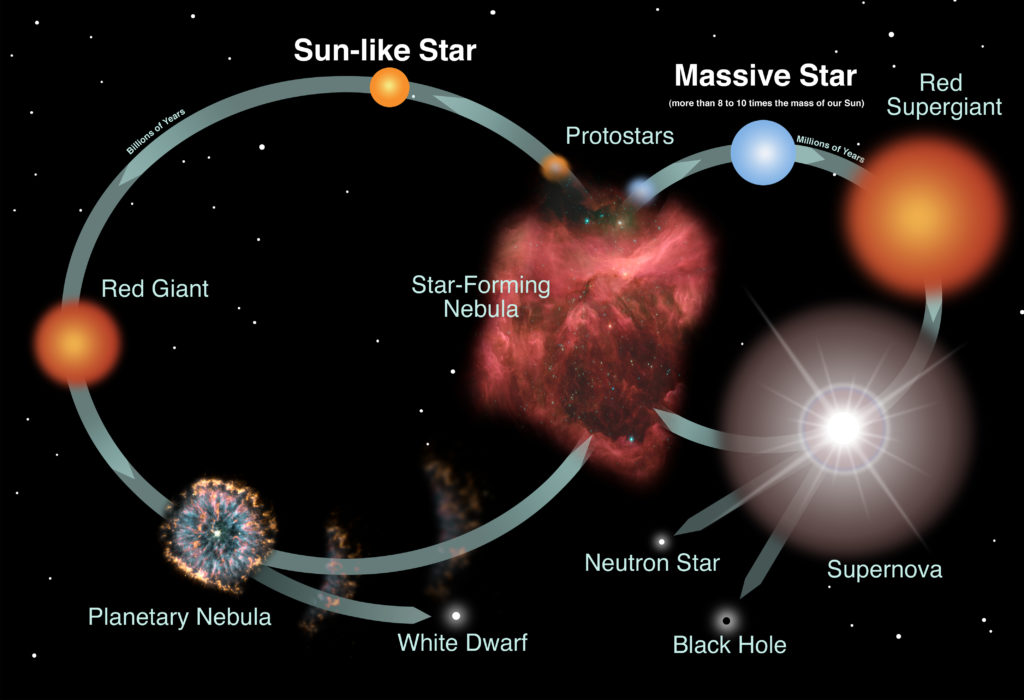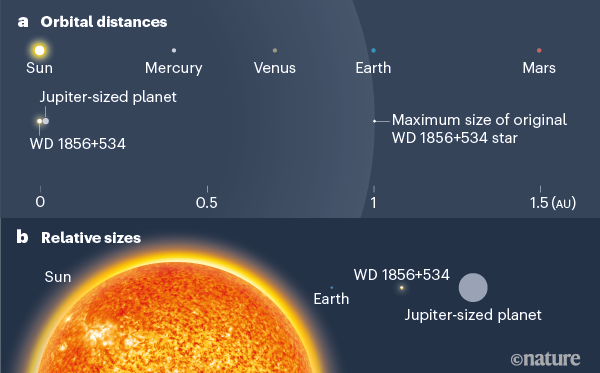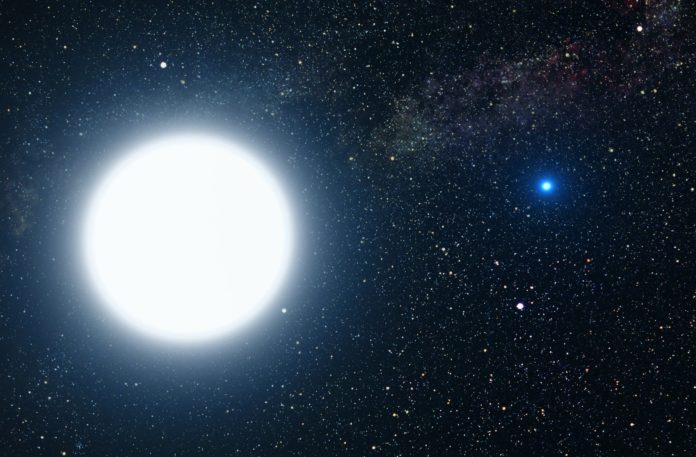A few billion years from now, the Sun will run out of the fuel that has been powering it all its life. It will expand outwards into a massive red giant star before collapsing in on itself to become a tiny white dwarf, leaving a dazzling planetary nebula behind. You and I won’t be around to see it — but what will happen to the planets in our Solar System when this fiery solar death finally does occur?

While you might think that it would be difficult for our Solar System’s planets to make it through this final stage in the Sun’s life, a new detection from NASA’s Transiting Exoplanet Survey Satellite, or TESS, has provided astronomers with evidence that a lucky few planets may be able to survive. The study included contributions from Bishop’s University and the Université de Montréal, and was published in Nature.
Surviving a stellar death
Astronomers have discovered thousands of exoplanets, or planets outside of the Solar System, orbiting around distant stars. But the majority of these exoplanet-hosting stars are still in the initial stages of their lives, and have yet to become red giants or white dwarfs. When this does happen, these stars will engulf all of their close-in planets — and in the case of the Sun, which will grow to about 250 times its current size, this most likely includes our own planet Earth.
Despite this, astronomers have long been interested in finding planets around white dwarfs, and learning more about whether planets — or even alien life — could survive through the violent deaths of their host stars. Last year astronomers found indirect evidence of a giant planet that made it through this transition, in the form of a disk of gas likely flowing off of a planet and onto a white dwarf.
With the help of the TESS telescope, however, astronomers have now spotted the first intact planet orbiting around a white dwarf star. The planet, known as WD 1856 b, is about the same size as Jupiter and completes one orbit around its white dwarf host every 1.4 days — in other words, it orbits much closer in to its white dwarf host than even the closest planets in our own Solar System orbit the Sun.
What’s more, the planet is roughly seven times larger than its host star, making the planet-star pair unique in terms of what we might typically imagine a planetary system to look like.

An unexpected planetary system
The TESS telescope uses the transit method to search for exoplanets around other stars, which means it measures the dip in a star’s brightness when an exoplanet passes in front of it and blocks some of its light. But because WD 1856 b is so different from other planetary systems that have been discovered by the TESS telescope, the planet was initially rejected by the telescope’s automatic detection algorithm.
WD 1856 b’s orbit is slightly tilted relative to our point of view, so while it doesn’t block its host star entirely, it does block much more light than you’d expect for a typical planetary system. The telescope’s algorithm was designed to look for dips in brightness of no more than a few percent, but WD 1856 b blocks a whopping 56% of its white dwarf host’s light, which is why the algorithm initially ignored the signal. Luckily, the authors later noticed the signal by eye and were able to confirm with additional observations that it was indeed caused by a planet.
The fact that the planet is so close to its white dwarf host raises a number of questions for astronomers. Planets located close-in to their host stars are expected to be destroyed when the star transitions to the red giant phase of its life—for example, our Sun will grow to about the size of the Earth’s orbit, and engulf any planets located closer in. This means that some other process must have been at work to allow WD 1856 b to survive.
“WD 1856 b somehow got very close to its white dwarf and managed to stay in one piece,” said Andrew Vanderburg, assistant professor of astronomy at the University of Wisconsin-Madison and lead author of the paper.
“The white dwarf creation process destroys nearby planets, and anything that later gets too close is usually torn about by the star’s immense gravity. We still have many questions about how WD 1856 b arrived at its current location without meeting one of those fates.”
The authors speculate that the planet may have originally been located much further away from its host star, and migrated inwards over time. But the exact mechanism that could cause the planet to migrate inwards is uncertain, and will require additional research to fully understand.








































